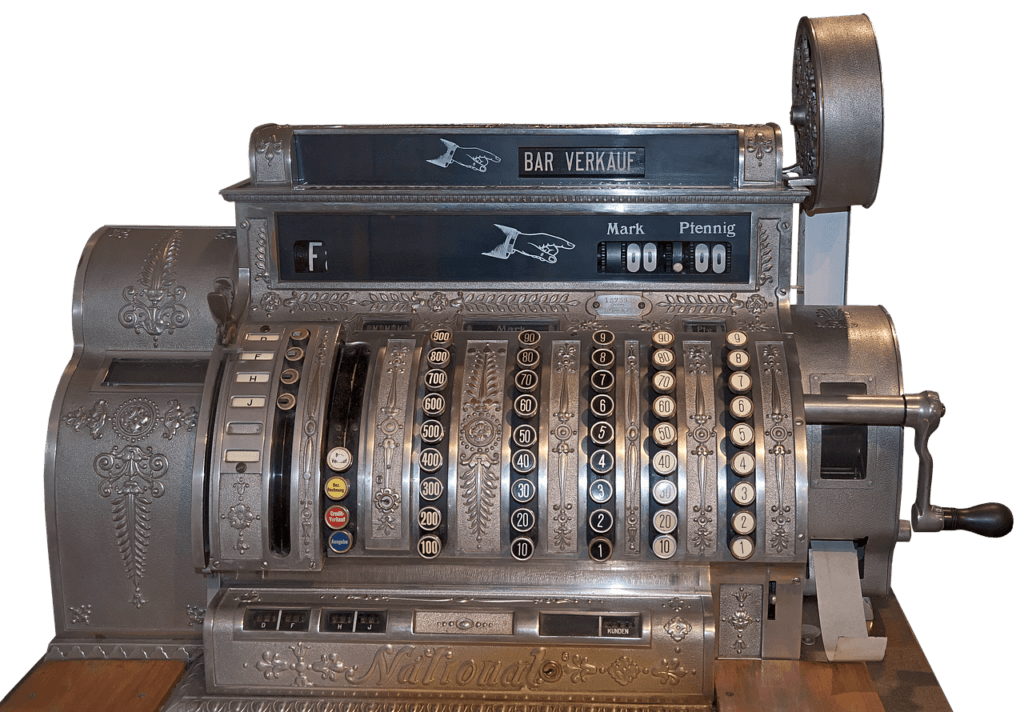Earnings are what people talk about, cash is what keeps the business going.
As an investor it is vital you understand how well the underlying business model of a company is performing. Earnings are what people talk about, cash is what keeps the business going. It would be logical to assume that cash flow is less prone to manipulation than earnings and an overall truer metric for understanding company performance. However, you should know what you see on cash flow statements isn’t always what it seems. In this post, we will explore just a few tactics that make cash flow look better than what it is.
Before digging into brass tactics we should explore the reasoning as to why cash flow would be manipulated at all. It goes without saying you get the behavior you incentivize. Most managers are compensated largely on the performance of their stock and have added incentive to keep their stock price higher. A company that misses their quarterly earnings target typically will see negative movement in their stock price. As the stock price goes, so does the compensation of management. Therefore to improve their own compensation, management at times will "play" with how cash flow is reported to appease short-term targets and keep the stock price where it needs to be. When it is not compensation that is driving the decision to manipulate cash flow it can be fear of future consequence. Often management knows that a "streak" is about to end, or rainy days are on the horizon. Holding back cash for a future reporting date builds in a buffer and buys management time. There are other reasons management might manipulate cash flow, but it is safe to assume most actions comes back to aligning short-term consequences with self-interest.
The Three Cash Flows: Operating, Investing, & Financing
There are three types of cash flow that management can utilize to run the business. All three have sections that can be found on the Statement of Cash Flow. In addition, all three have specific inflow and outflow activities that shape the logical flow of cash moving in and out of the business.
The first section of the Cash Flow Statement is Cash from Operations. This section should tell us how well the actual business is doing and how much cash is coming in from actual operations. If you are investing in a business because of the business model, it makes sense to place a high emphasis on cash specifically from operations.
| Inflows of Operating Activities (+) | Outflows of Operating Activities (-) |
|---|---|
| Customer Collections | Vendor Payments |
| Interest Collections | Employee Salaries |
| Dividend Collections | Tax Payments |
| Interest Payments |
The next section is Cash from Investing. This section gives us an idea of how the business is deploying cash outside of core operations. If a business makes an acquisition or completes an investment sale, you will find it under this section.
| Inflows of Investing Activities (+) | Outflows of Investing Activities (-) |
|---|---|
| Investment Sales | Capital Expenditures |
| Business Disposals | Investment Purchases |
| Plant / Equipment Sales | Property Purchases |
| Business Acquisitions |
The final section you will come across is Cash from Financing. This section details how the business is financing everything that it is doing. Items like issuing stock, borrowing from the bank and paying out dividends are found in this area.
| Inflows of Financing Activities (+) | Outflows of Financing Activities (-) |
|---|---|
| Bank Borrowings | Loan Repayments |
| Other Borrowings | Stock Repurchases |
| Stock Issuance | Dividend Payments |
Understanding the inflows and outflows of the different sections will give us a clearer view as to the tools management has to manipulate cash flow.
Shifting Financing Cash Inflows To The Operating Section
Since most investors are paying attention to how well the business model is working, the Operating Section of Cash Flow becomes a big area of focus for management. Improving cash flow from operations signals the business is strong and headed in a positive direction. When cash flow from operations dip, it might signal a rough patch or the start of longterm problems in the fundamental model of the business. It is important to look closely at what is going on between the Operating Section of Cash Flows and the Financing Section of Cash Flows.
#1. Aggressively Selling Receivables
The first tactic to look out for is the act of selling receivables. Selling receivables in itself is a common practice. However, selling receivables too early can greatly inflate an average operational performance (or below average performance). When management sells receivables they are taking cash from the future and applying it to current operation periods. The cost is typically at a large discount to what the future receivable would be worth.
When analyzing a company, look for two specific words that could hint management is employing this tactic; Factoring and Securitization.
Factoring is when a company will sell their receivables to another entity. Many times a company will use factoring as an alternative financing source. This brings us to the question, is this a financing activity or an operating activity?
Securitization is similar to factoring but a little fancier. Securitization typically entails a company selling their receivables to a third party entity in exchange for a new financial instrument. Often the financial instrument will mimic the receivable inflows with an obvious tilt to favor whatever number management is currently trying to meet.
Both Factoring and Securitization are typically reported in the footnotes of financial statements. If you see either word, it is worth taking the time to understand how they might be impacting true operational cash flow.
If you don’t catch the sale of receivables through the words Factoring or Securitization, you sometimes can see it in the actual numbers. Be on the lookout for drastic swings in cash flow from operations. An optimistic investor might assign a value to this notion as a testament that the core business model is improving. However, dig deeper and look for explanations into how the drastic change in cash flow occured. A company will disclose the sale of receivables if it contributed to a significant impact on performance. If a company fails to mention this or is intently vague, you might want to consider that as a stronger warning sign of things to come down the road.
#2. Cash Flow From Normal Borrowing
Borrowing is a normal business activity. It should be documented as an inflow under Cash from Financing. However, creative borrowing structures can shift inflow of cash as a Financing Activity to inflow for Cash from Operations. For example, using inventory as collateral on a loan is normal but selling that inventory with the obligation of buying it back at a later time is not so normal. This is exactly the tactic Delphi Corporation utilized when it arranged a “creative” borrowing initiative where it sold inventory (a typical positive inflow to Cash from Operations) to its lender with a future obligation to buy it back (a not so typical outflow arrangement). The structure mimicked the finances of a typical loan, however executing it this way allowed Delphi Corporation to book the income as Cash from Operations. As any investor would attest, cash from a loan and cash from sales are very different.
Another tactic that utilizes borrowing to document cash where it shouldn’t be, is the use of complicated special purpose vehicles or subsidiaries. A larger company can create an SPV or Subsidiary and help that individual entity borrow money. The money that entity borrows can be used to “purchase” from the company that helped set it up. Under this structure, the larger (or parent) company gets an inflow of cash reported under Cash from Operations. The SPV or Subsidiary takes the hit to their balance sheet with higher debt that was used to finance an operating expense. This was one of the many tactics Enron used to keep meeting expectations during its fraudulent run.
Spotting Cash Flow from borrowing activities can be difficult. One area to thoroughly analyze is any stray act from normal reporting definitions. If a company has decided to redefine a standard metric or label for reporting purposes, it is worth understanding what might be the motivation behind that action. In addition, when a company discloses its relationship with an SPV or an outside entity, do your research to understand how much that relationship is actually affecting inflows of Cash from Operations.
#3. Questionable Acts Around Receivables
If a company is manipulating their cash flow and it’s not through the acts of aggressively selling their receivables or borrowing under questionable tactics, you may want to ask yourself if they are doing a mixture of the two. Using receivables as collateral against borrowed funds is a tactic that creates a confusing story around reporting time. Borrowing funds is clearly a financing activity. Receivables is clearly an operating activity. If a company sold their receivables that cash would come through the Cash from Operations section. However, when a company uses the receivable as collateral it should be treated as a financing activity. The cash injected into the company was not received from customers, it was received from a financing activity.
Ultimately, look for patterns between the Change in Account Receivables (via the Cash from Operations on the Statement of Cash Flows), and the Accounts Receivable, net (via Total Current Assets on the Balance Sheet). When you come across something that looks out of the ordinary, aggressively search disclosures and any changes as to how the company recognizes cash from operations. Typically there is a reason a company issues a statement or a new disclosure.
Shifting Operating Cash Outflows To The Investing Section
The tactics to manipulate cash flow is not reserved for just the Financing Section of the Statement of Cash Flows. Another clever hunting ground for manipulation is the Investing Section on the Statement of Cash Flows. Let’s take a look at tactics that you should be on the lookout for.
#4. Capitalizing Normal Operating Costs
An easy area to look at first is how management is treating normal operating costs. Normal expenses tied directly to operations, bring down the reported Free Cash Flow from Operations. If those expenses were not an expense but an investment, the “expense” would disappear under Operating Cash Flow and reappear as an outflow of Investing activities. The result of this action inflates the performance of Cash from Operations.
If you are worried that a company is mistreating operating costs, take a hard look at their Balance Sheet. An aggressively growing Balance Sheet might indicate that normal operating expenses are being capitalized and considered documented as assets to the business. If this is occurring you might want to ask yourself, "realistically how often are these assets going to need replacing to maintain current operation performance?" Another area to consider is the line item on the Balance Sheet titled “Other Assets.” At times management will use this as a collect all bucket to offset what should be documented as rising expenses. Be on the lookout for consistent increases in the line item Other Assets. If little explanation is given to what those assets actually are, it might be a red flag.
#5. Inventory as an Investing Activity
The cost of inventory makes up a large part of Cost of Goods Sold (COGS). It’s logical that this should be documented as an operating expense and therefore directly impacting the company Operating Cash Flow. However, sometimes a company can make a strong argument for why what some would consider inventory, they consider an investment asset. Take for example the practical situation Netflix encountered. In its earlier days of operation, Netflix had to make a decision as to how they would treat the purchase of DVDs. Was it a normal operating expense of inventory (think replacement and consistent turnover), or an actual asset. Typically companies will specify how they are treating decisions of this nature and stick to one method or another. If a company flip-flops, it warrants taking a closer look to understand the real story as to why they are changing the rules well into the game. As an investor, it is important to understand management's decisions around this and how it effects the numbers you are analyzing.
#6. Circular Transactions
Sometimes management needs to use savvy creative techniques to get a deal complete. It is a justified action and part of doing business. However, sometimes management utilizes too clever of techniques to give a favorable slant to reporting numbers. A tactic to look out for is the ever so clever utilization of circular transactions. You typically can spot this when a company discloses a “unique” transaction structure between a customer. For example, if you see a company selling to a customer (a positive inflow of cash for Operating activity) and purchasing an asset like transactions (an outflow of cash from Investing Activity) from that same customer, you might want to ask what really is happening with the transaction. Management understands that Cash from Operations is closely followed and investors like seeing that number increase. Management also realizes that “investing” can signal expansion and growth. This tactic can feed positive signals in both areas of the Cash Flow Statement. Be sure to step back and read the details within the disclosure of that transaction. Circular transactions can help both companies involved but eventually, come crashing down.
In Closing
Overall these are just a few of the tactics that investors have had to decipher over the years. As long as management has the incentive to prioritize the short-term, you can bet that innovative techniques will be created to meet those numbers. Be thorough, and ask questions about why a company might be acting as they are. In the future, we will discuss more ways that you can spot further actions that distort cash flow, earnings and reporting metrics.
Author: Carter Johnson
Expertise: Entrepreneurship and business strategy
Carter is the founder of United Business Leaders which invests in private companies with strong operating histories. He has a passion for investing and helping businesses with strategic initiatives.
Connect with Carter on LinkedIn.















